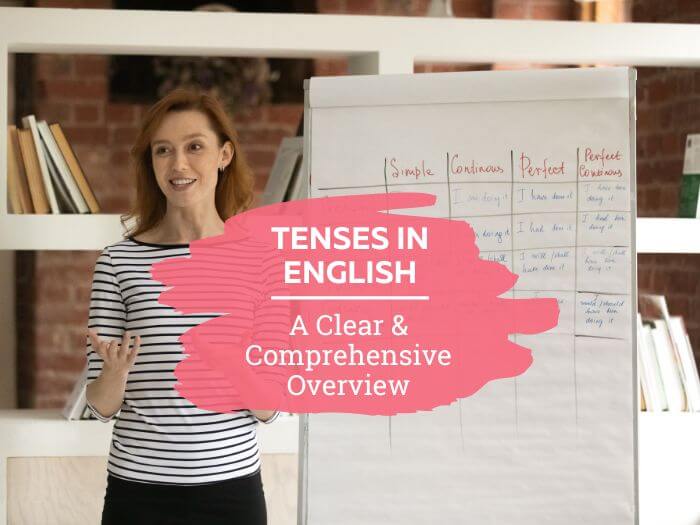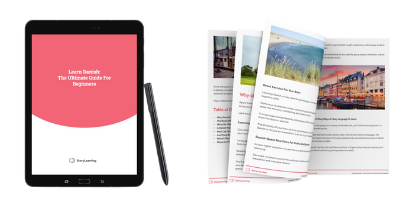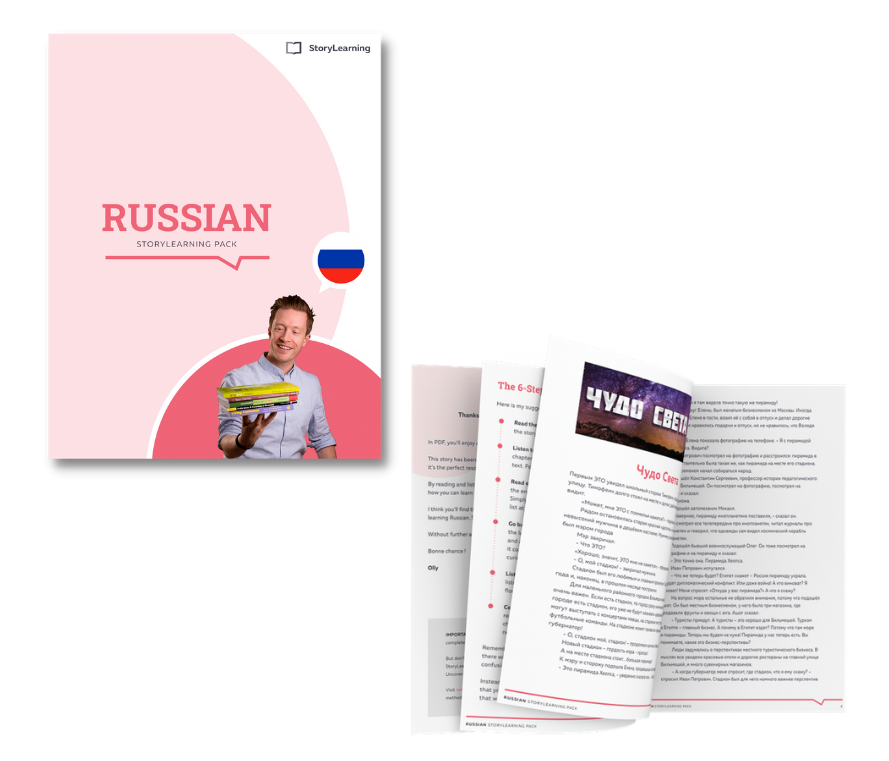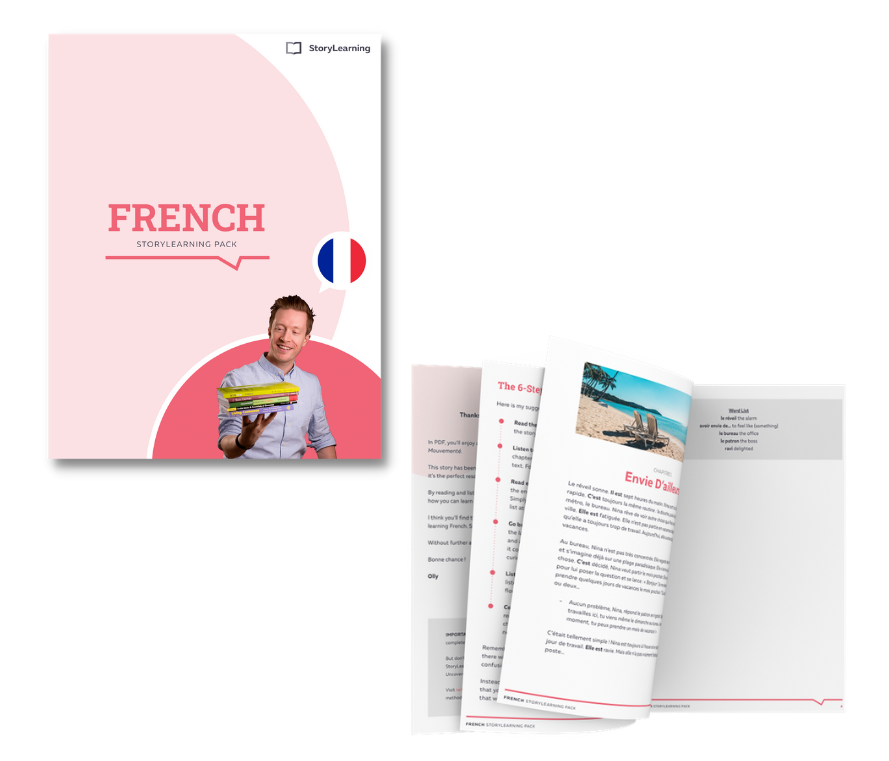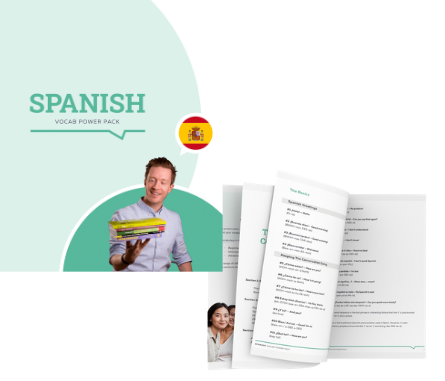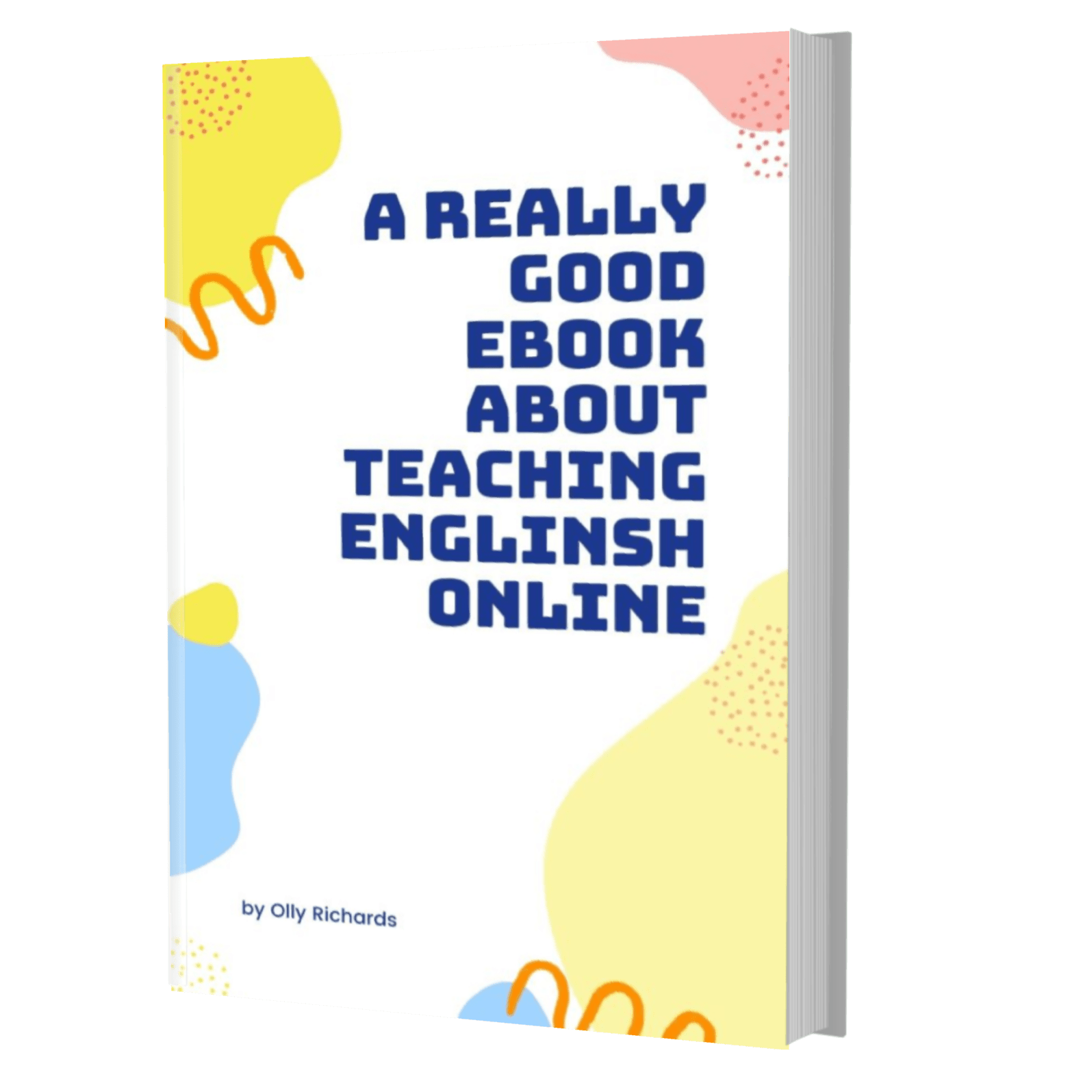Tenses in English can be tricky.
We can use the present simple to talk about the future (e.g. I work tomorrow). We can use the past simple to talk about the present (e.g. If I were rich, I wouldn’t be here) or the future (e.g. They wish they weren’t leaving tonight). We can use the present to talk about the past (e.g. 1939: The Second World War starts).
What’s wrong with the English language?
What’s simple about the present and past simple? What’s perfect about the present perfect? And what’s continuous about the present perfect continuous?
What are tenses? How many are there in English? Is the past perfect a tense? What is English aspect?
So many questions.
I’m glad you’re here because we’re going to answer them all.
Table of Contents
How Many Tenses Are There in English?
To answer this question, we first need to make a distinction between the concept of grammatical tense and the notion of time.
When we talk about time, we talk about past, present, and future. When we talk about grammatical tense we refer to the way English verbs change their forms to indicate their relation with time.
In this sense, English verbs change based on present and past time.
- I see / I saw
- She plays / She played
That’s why there are only two basic tenses in English: present and past.
English doesn’t have a future tense. To talk about the future, we use “will” (e.g. I will go) or the present simple (e.g The train leaves tomorrow at 4 pm) or other forms (if you're interested in all the future forms in English, check out The Ultimate Guide To The English Future Tense).
You may say, “But English verbs also have “ing” forms (seeing, going, playing) and past participle forms (been, seen, studied, known).
That’s true. But those forms don’t indicate time.
Consider the following:
- I’m going to the cinema tomorrow. (Future)
- I’m going home right now. (Present)
- She was going home when she saw him. (Past)
- She’s already been to Spain twice. (Past/Present)
- By 2030, I will have been to the USA several times. (Future)
As you can see, there’s no direct correlation between these forms and time.
This is why now we need to talk about the concept of aspect.
What Is Aspect? And What Are The 12 Verb Tenses In English
There are two aspects in English: perfect and continuous (or progressive). Aspects combine with tenses (present and past) to create many different verb structures (what students and teachers commonly call “tenses”).
| no aspect (simple) | perfect | continuous | perfect+continuous | |
| present | I eat pizza | I’ve eaten pizza | I’m eating pizza | I’ve been eating pizza |
| past | I ate pizza | I had eaten pizza | I was eating pizza | I had been eating pizza |
| ‘future' | I will go on holiday soon | By 2070, people will have found a way to live on Mars | Tomorrow at this time, I will be flying to Spain | Tomorrow at this time, I will have been flying for three hours |
To talk about the future, as we saw before, we use different forms and verbs. Even though there's technically no ‘future tense' in English, to keep things simple, I've added the modal verb “will” to the table above.
Let’s see how the two aspects (perfect and continuous) work.
English Aspect: Perfect
The perfect aspect is formed using the auxiliary verb “have” + past participle.
“Have” can be marked for tense (present / past):
- I have been to China twice in my life.
- I had never been to China before that day.

The core function of the perfect aspect is to make a connection between the past and the present. Every time you use the perfect aspect, you’re looking back at the past from the present.
Here are some examples to show you what I mean:
- I’ve known my best friend since 2001. (Present perfect)
- She’s been working in Australia for years. (Present perfect continuous)
- By the time I’m 60, Mark will have travelled to the US many times. (Future perfect)
- I’ve been to Spain three times in my life. (Present perfect)
- Have you ever been to Greece? (Present perfect)
- I’ve just got home. (Present perfect)
- They had been dating for a while before they started living in the same home. (Past perfect continuous)
Sentences no.1 and 2
- I’ve known my best friend since 2001.
- She’s been working in Australia for years.
Both express something that started in the past and is still true in the present. There’s a clear temporal connection between past and present.
Sentence no. 3
- By 2040, Mark will have travelled to the US many times.
We can look back at the past from a present point situated in the future.
This is exactly what this sentence does. It teleports us to 2040. Even though it’s in the future, 2040 becomes the present moment. From there, we connect to the past by looking at it. What do we see? Mark completing many trips to the US.
Sentences no. 4 and 5
- I’ve been to Spain three times in my life.
- Have you ever been to Greece?
Is your life finished? I hope not! Your life is an unfinished period of time, which is another way to say a period of time that started in the past and hasn’t ended yet (and, hopefully, won’t end any time soon).
That’s why sentence 4 includes the perfect aspect.
What about sentence no.5? Same story. Asking you “Have you ever been to Greece?” is the same as asking you, “From the day you were born to this moment, was there a time you went to Greece?”
The question, again, refers to an unfinished period of time. And, again, the past-present connection is made.
Sentences no. 6 and 7
- I’ve just got home.
- They had been dating for a while before they started living in the same home.
What past-present connection is there in “I’ve just got home”?
Here’s the answer: what happened in the past (getting home) is somehow relevant to the present moment.
Let’s place this sentence in a dialogue. That may help you understand.
Wife to husband (or husband to wife)
A: Nice to see you, honey! Can you go buy some bread for tonight?
B: But I’ve just got home! I want to relax now! I don’t want to go out again.
A: Okay, no bread tonight then.

Although getting home is a completed past event, it has a connection to the present because it’s relevant and important now. The past event has “present relevancy”. That’s why Speaker B uses the perfect aspect.
And that’s why we often use the present perfect to talk about the news (=completed past events that are important now) and with adverbs of time like “yet,” “already,” and “still”. These three little words help connect the past with the present.
- Yet – Used to talk about something that has not happened in the past / present time but that you expect to happen in the future (e.g. I haven’t eaten yet).
- Already – Used to show that something has happened sooner than expected or earlier than anticipated (e.g. I have already eaten).
- Still – Used to show that something that started in the past continues to happen up to the present moment. (e.g. I still haven’t eaten).
English Aspect: Continuous (Or Progressive)
The continuous aspect is formed using the auxiliary verb “be” + ing form.
“Be” can be marked for tense (present or past):
- I am eating now. Call me later, please.
- I was eating when she arrived.
As its name suggests, the core meaning of the continuous aspect is that the event, situation, or action is viewed as “in progress” or “continuing” in the present or in the past.
The continuous aspect doesn’t tell us when the action happened. It tells us about its continuing, ongoing nature.
Some examples:
- Yesterday at 8 pm we were watching a movie. (Past continuous)
- She’s having a shower now. (Present continuous)
- I’m leaving next month. (Present continuous for future)
- I’m meeting my friend at the park this afternoon. (Present continuous for future)
- Don’t call me at 6 am tomorrow. I’ll be sleeping! (Future continuous)

Sentences no.1 and 2
- Yesterday at 8 pm we were watching a movie.
- She’s having a shower now.
Both sentences express an action that is in progress. In the first one, the action is in progress in the past, while in the second one, it’s in progress in the present.
Sentences no.3 and 4
- I’m leaving next month.
- I’m meeting my friend at the park this afternoon.
Why do we use the present continuous to talk about future arrangements? What’s “in progress” in these sentences?
The answer is that the two events (leaving and meeting) are seen as the endpoint of a process that started before the speakers said the two sentences. That process is in progress now and will end the day the events will happen.
Sentence no.6
- Don’t call me at 6 am tomorrow. I’ll be sleeping!
Here we have an action we see as “in progress” in the future i.e future continuous tense.
Okay, let’s now review some of the main verb structures we can form by combining the various verb tenses in English and aspects we’ve just seen.
Basic Verb Tenses In English: Present And Past Simple
Present Simple Form
We form the present simple using the present form of the verb. Third person subject pronouns take the -s.
| Positive | Negative | Questions | |
| To be | She is beautiful | They are Italians | Are you okay? |
| Other verbs | I love Australia | She doesn’t like horror movies | Do they cook every day? |
Present Simple Use
We use the present simple to talk about:
- Permanent situations, general truths, and facts that we see as always true. (e.g. The Earth is round)
- Things (habits, routines) that happen regularly, always, sometimes etc. (e.g. I play tennis every Monday)
- States and senses (e.g. It looks great!)
- The future (e.g. I work tomorrow / The train leaves tomorrow at 9 pm)
- In the “if” clause of real conditional sentences with present meaning (e.g. We’ll go to the beach if the weather is nice).

Here are 3 texts from my book 101 Conversations in Simple English: Short Natural Dialogues to Boost Your Confidence & Improve Your Spoken English.
They all contain some examples of the present simple in context.
- 101 Conversations in Simple English prepares you to speak English in the real world. Unlike the contrived and unnatural dialogues in your textbook, the 101 authentic conversations in this book offer you simple but authentic spoken English that you can study away from the pressure of face-to-face conversation.
- The extensive, story-based format of the book helps you get used to spoken English in a natural way, with the words and phrases you see gradually emerging in your own spoken English as you learn them naturally through your reading.
- The truth is that you can learn an extraordinary amount passively as you read and listen to the language, but only if you give yourself the opportunity to do so!
Do you sometimes mix up the present tenses in English? Check out this blog post about present simple vs present continuous to learn the main difference between the two.
Past Simple Form
The past simple of regular verbs is formed by adding “ed” to the verb.
- Talk – talked
- Watch – watched
- Play – played
Irregular verbs have different and unpredictable forms that you’ll have to learn individually.
- be – was/were
- bite – bit
- become – became
| Positive | Negative | Questions | |
| Regular verbs | She worked a lot | She didn’t work a lot | Did she work a lot? |
| Irregular verbs | I had a great time | I didn’t have a great time | Did you have a great time? |
Past Simple Use
We use the simple past when we talk about actions, events, or situations that we see as finished in the past.
We use it to:
- Narrate stories (e.g. Once upon a time there was a man who lived alone in the mountains)
- Talk about single momentary past events (e.g. I went to the cinema yesterday)
- Talk about things that happened over a period of time in the past (e.g. I lived in Australia from 2013 to 2015)
- Talk about repeated past events (e.g. When we were children, we always spent our summer holidays with our grandparents).
- Talk about a sequence of events that happened in the past (e.g. I woke up, had breakfast, and went to work)
- Talk about events that might have interrupted or stopped another early event (e.g. The bell rang while I was eating with my dad).
- Talk about past events that are happening at the same time. (e.g. I cooked while she read a book.)
- In the “if” clause of imaginary conditional sentences with present meaning (e.g. I would buy a house if I had more money).
- To sound polite when making requests and asking questions (e.g. Could you let me know?)
- In “would rather” sentences (e.g. I’d rather you didn’t go there)

Here are a few examples from my book, Short Stories in English for Beginners: Read for pleasure at your level, expand your vocabulary and learn English the fun way! (Kindle edition – p.107).
David didn’t understand. He had no idea what the man wanted. How could he give the man numbers he didn’t know? Finally Walter said, ‘I’m sure you’ve got one of those numbers.’
‘I don’t know what you are talking about.’
‘Think about it, David. You must have an old object. An object with a number on it?’
David thought carefully. He had no such object. He was sure of it. Then he remembered something. He did have one thing with a number. Maybe that was it?
‘Now that you mention it,’ he said excitedly, ‘I may have something! Wait here. I’ll go and get it!’
‘Where are you going?’ asked Walter.
‘To my house. I need to get something.’ ‘Wait! I’ll come with you.’
Check out my “Comprehensive Guide To The Past Simple In English” to learn more about the English verb tense.

A nerdy note on the present and past simple
What’s simple about the present and past simple?
In a book titled The English Verb, Michael Lewis, a linguist and English teacher, said this:
The essential characteristic of the “present simple” is that it expresses the speaker’s view of the event as a timeless fact. Paradoxically, not only is the present simple not about Present Time, but it is not about time at all. This is a characteristic which it shares with “the past simple”. Each of these forms is “simple” in the sense that the speaker sees the events described as single, simple entities, unities, totalities. The “present simple” and “past simple” contrast with each other in that in the first the speaker sees the event as immediate, and with the “past simple” the event is seen as remote. These are not essentially temporal concepts.
Michael Lewis, The English Verb, P. 66
This is why sometimes there is a match between present simple and present time (e.g. I have a girlfriend / She speaks English / I want a coffee now) and sometimes there isn’t (e.g. I have a meeting tomorrow). The same is true for the past simple.
- If I were you, I wouldn’t go.
- It’s time we went home now.
- If I won the lottery, I would travel the world.
As you can see, there’s nothing “past” about the sentences above.
Present Continuous
Form
The present continuous is formed by the present simple form of the verb “to be” (am/is/are) and the “ing” form of the main verb.
| Positive | Negative | Questions |
| I am working | They aren’t working | Is she working? |
Use
We use the present continuous to talk about:
- Temporary actions that are happening as we speak (e.g. I’m eating now).
- Temporary actions that are happening “around now,” not necessarily at the moment of speaking (e.g. I’m speaking English a lot these days).
- Things or situations that are changing or developing over time. (e.g. Renewable energy sources are becoming more popular).
- Future arrangements (e.g. I’m meeting my friends at the pub tonight)

Met's take a look at some examples in context from my book 101 Conversations in Simple English: Short Natural Dialogues to Boost Your Confidence & Improve Your Spoken English
- Natalie and Alice continue talking about what they know. They are walking by the fence, outside Lawrence Windsor’s mansion. (Kindle edition – p.81)
- The most effective way to make headway through a piece of content in another language is to ask yourself: “Can I follow the gist of what’s going on?” You don’t need to understand every word, just the main ideas. If you can, that’s enough! You’re set!
- Robert Green: You are telling me that these drawings are by Turner?! Natalie: Yes, I’m almost certain. I’m an art historian. I know Turner’s work. I know his paintings and his drawings. These are by Turner. (Kindle edition – p.17)
Past Continuous
Form
The past continuous is formed by the past simple form of the verb “to be” (was/were) and the “ing” form of the main verb.
| Positive | Negative | Questions |
| I was working | They weren’t working | Was she working? |
Use
We use the past continuous to:
- Talk about something in progress over a certain past period (e.g. She was taking the course I was taking).
- Talk about something in progress at a certain past moment or time (e.g. What were you doing yesterday at 8 pm?)
- Talk about something in progress at the same time as something else was in progress (e.g. I was making lunch while she was reading).
- Set the background when telling stories and anecdotes (e.g. I was walking in the woods when I heard a bang).
- Make polite requests (e.g. I was wondering if you could…).
Take a look at some examples from my book, Short Stories in English for Beginners: Read for pleasure at your level, expand your vocabulary and learn English the fun way!

- Lars walked in silence for several minutes. Alfred stayed silent, but he was thinking. He wanted to know more about the great battle. He had always thought that King Andur was a peaceful king. (Kindle edition – p.65)
- Suddenly, Sylvia saw movement around her. All of her friends and family came out of the woods. They had their torches on. But they had something else in their hands, too – candles! And they were singing something. It was a song she knew well. (Kindle edition – p.49)
- The next day, three guards came to Lars. They were joining the knight on the journey. They carried weapons. They were prepared for a fight if needed. The four men walked to the Northern Road. It led straight to Arthuren’s kingdom. At the road, the horses and the gold were waiting. (Kindle edition – P.58)
Check out the ultimate guide to the past continuous to learn more about it.
Present Perfect
The formula for the present perfect is very simple:
Subject + have/has + past participle
| Positive | Negative | Questions |
| I’ve worked hard | He hasn't worked | How long have you known each other? |
Use
We use the present perfect for:
- Actions that started in the past and continue up to the present (e.g. I’ve worked here since 2009)
- Actions that were completed in the past, but their effects are still felt in the present (e.g. I’m so full. I’ve eaten too much!)
- Actions that occurred at an unspecified time in the past (e.g. I’ve been to Italy twice).
- Actions that have just or already happened (e.g. I have already / just seen that movie).
- Actions that still haven’t happened or haven’t happened yet (e.g. I haven’t seen that movie / I still haven’t seen that movie).

Take a look at some more examples from 101 Conversations in Simple English: Short Natural Dialogues to Boost Your Confidence & Improve Your Spoken English.
Detective Smith: That police car is making sure that Robert Green doesn’t escape. Let’s ask my colleagues if they have seen anything strange. (Kindle edition – P.164).
The gardener, Artur, enters the room. Alice asks him several questions about the day of the robbery. Artur is tall and slim and has brown hair. He wears glasses, which are broken and have been stuck together with tape. (Kindle edition – P.52)
When Natalie and Alice arrive at the shop, they see that the police have already arrived. The shop windows are broken. Mr. Robert Green looks very upset. (Kindle edition – P.24)
Natalie: Have you ever seen a man in a hat in Camden Market? Mariana Windsor: Yes…. I think I know who you’re talking about; a tall man in a black hat, right? (Kindle edition – P.43)
Lawrence Windsor: The cleaner is called Charlie. Charlie is Welsh and I have known him my whole life. His father was a friend of my father. (Kindle edition – P.45)
Check out A Complete Guide To The Present Perfect In English to learn more about this verb structure.
Present Perfect Continuous
Form
We form the present perfect continuous tense using “have/has been” plus the “ing” form of the main verb.
| Positive | Negative | Questions |
| I’ve been working here for three years | She hasn't been working lately | How long have you been studying English? |
Use
We use the present perfect continuous to talk about:
- Recent past activities whose results are still evident in the present. (e.g. I’m so tired. I’ve been working too much today).
- Activities that started in the past but are still in progress now (e.g. I’ve been working since this morning).
- Repeated activities or events that started in the past and are still happening in the present (e.g. She’s been working hard on her English lately).

Here are two examples from Short Stories in English for Beginners: Read for pleasure at your level, expand your vocabulary and learn English the fun way!
- So perhaps you are new to English and looking for an entertaining way to learn, or maybe you have been learning for a while and simply want to enjoy reading and expand your vocabulary, either way, this book is the biggest step forward you will take in your studies this year. (Kindle edition – P. x)
- Laura leaves the managers to their meeting. It is getting late. She decides to go home to see her husband. Recently, they have been arguing a lot. In fact, they had a big argument about work today. It will be interesting to see her husband when she’s invisible. Maybe she can learn something! (Kindle edition – P. 163)
And three more from 101 Conversations in Simple English: Short Natural Dialogues to Boost Your Confidence & Improve Your Spoken English.
Natalie: It’s an amazing collection!
Mariana Windsor: Yes, it’s my passion. I have been collecting comic books since I was five.
(Kindle editon – p.43).
Alice: Okay. One last question. Is it the first time that things have disappeared from the house?
Liz: No, come to think of it, it’s not! Things have been disappearing a lot lately. Just a week ago, a beautiful and very valuable silver salt shaker disappeared….
(Kindle edition – p.57)
Detective Smith: It’s my job to know these things! I am investigating everything related to the robbery as well. I know you are doing the same.
Natalie: Yes, we have been making some inquiries…. We don’t want to interfere with the police, of course.
(Kindle edition – p.135)
Check out How To Master Present Perfect Continuous to learn more about it.
Past Perfect
Form
The formula for the past perfect is like the one for the present perfect, except you use the past simple form of the auxiliary verb “have”:
Subject + had + past participle
| Positive | Negative | Questions |
| I had worked hard | He hadn’t worked | How long had you known each other? |
Use
The past perfect is used to describe an action or event in the past that happened before another past action or event (e.g. When she arrived, they had already left).

Check out some examples from Short Stories in English for Beginners: Read for pleasure at your level, expand your vocabulary and learn English the fun way!
- Frank ignored him. He was looking at the beach. Then he looked at the town and the people. It was the first time he had been in the future. It was all new, and a little strange. Eric got more and more angry. He said to Frank, ‘What do we do now? We can’t go back! What do we do?’ (Kindle edition – p.99)
- Susan was a security guard. She watched the boats near the beach. She told Carl she liked her job. She saw many interesting things on the beach. In fact, she had found something just today. (Kindle edition – p.80)
- Carl watched Eric. He was attempting to use the watch. But it wasn’t working. Then Carl realized something. Eric el Kraken had only found the watch. He didn’t know how it worked. (Kindle edition – p.88)
- The pirates didn’t pay much attention. Crazy things had often occurred due to the watch. (Kindle edition – p.90)
- The time had come. The English ships had arrived. They began firing their cannons. The pirate boats fired their cannons back. The ships rocked as the cannon balls hit around them. Eric shouted at his men, ‘Come on! Keep firing! We can’t lose!’ (Kindle edition – p.98)
For more on the past perfect, check out The Ultimate Guide To The English Past Perfect.
FAQs About Different Tenses In English
What are the 12 tense in English?
1. Present simple: I eat pizza
2. Present perfect: I’ve eaten pizza
3. Present continuous: I’m eating pizza
4. Present perfect continuous: I’ve been eating pizza
5. Past simple: I ate pizza
6. Past perfect: I had eaten pizza
7. Past continuous: I was eating pizza
8. Past perfect continuous: I had been eating pizza
9. Future simple: I will eat pizza
10. Future perfect: I will have eaten pizza
11. Future continuous: I will be eating pizza
12. Future perfect continuous: I will have been eating pizza
How do you explain tenses?
Tense refers to the way that verbs in English change their form to indicate their relation with time. For example, ‘I play' (present simple) becomes ‘I played' in the past simple. These two basic tenses (technically three if you include ‘will' to talk about future time) combine with 4 different aspects to create what we call ‘tenses'. The aspects are – simple, perfect, continuous and perfect+continuous.
Are there 12 or 16 tenses in English?
In theory, there are only two tenses – present and past. But if you combine the 4 aspects (simple, continuous, perfect and perfect + continuous) with past, present and future (will) you get 12 ‘tenses'.
What are the 4 basic tenses?
Here are 4 basic English tenses that are essential to know in order to communicate:
Present simple: I run, she eats, I live in London etc
Past simple: We walked, he ate, they spoke etc
Present perfect: They have been to Spain three times, I haven't seen him etc
Present continuous: I'm learning English , he's looking for a job etc
English Tenses: Final Thoughts & Next Steps
That was a lot of information to cover about types of verb tenses in English (and we hardly covered conditional tenses in English) ! Well done for making it to the end!
I hope you noticed that there’s nothing wrong with the English language.
Don’t worry if some of the concepts still seem confusing. You don’t need to know or understand every single grammar rule about English tenses to be able to speak.
Do you know all the rules of your first language? Probably not.
Studying the rules can help, of course. But one of the best ways to fully master the grammar of a language is through exposure. And what better way to expose yourself to lots of English than with a good story?
Did you notice how many examples of tenses in English I gave you from the stories in my books? Reading short stories like those will help you internalise language without consciously studying it. It’s fun.
And if you keep at it, you’ll be able to improve the way you express your ideas in English.
Stories are both simple and perfect!
So…keep reading, keep listening and keep having fun!

Olly Richards
Creator of the StoryLearning® Method
Olly Richards is a renowned polyglot and language learning expert with over 15 years of experience teaching millions through his innovative StoryLearning® method. He is the creator of StoryLearning, one of the world's largest language learning blogs with 500,000+ monthly readers.
Olly has authored 30+ language learning books and courses, including the bestselling "Short Stories" series published by Teach Yourself.
When not developing new teaching methods, Richards practices what he preaches—he speaks 8 languages fluently and continues learning new ones through his own methodology.
